-
 Bitcoin
Bitcoin $106,754.6083
1.33% -
 Ethereum
Ethereum $2,625.8249
3.80% -
 Tether USDt
Tether USDt $1.0001
-0.03% -
 XRP
XRP $2.1891
1.67% -
 BNB
BNB $654.5220
0.66% -
 Solana
Solana $156.9428
7.28% -
 USDC
USDC $0.9998
0.00% -
 Dogecoin
Dogecoin $0.1780
1.14% -
 TRON
TRON $0.2706
-0.16% -
 Cardano
Cardano $0.6470
2.77% -
 Hyperliquid
Hyperliquid $44.6467
10.24% -
 Sui
Sui $3.1128
3.86% -
 Bitcoin Cash
Bitcoin Cash $455.7646
3.00% -
 Chainlink
Chainlink $13.6858
4.08% -
 UNUS SED LEO
UNUS SED LEO $9.2682
0.21% -
 Avalanche
Avalanche $19.7433
3.79% -
 Stellar
Stellar $0.2616
1.64% -
 Toncoin
Toncoin $3.0222
2.19% -
 Shiba Inu
Shiba Inu $0.0...01220
1.49% -
 Hedera
Hedera $0.1580
2.75% -
 Litecoin
Litecoin $87.4964
2.29% -
 Polkadot
Polkadot $3.8958
3.05% -
 Ethena USDe
Ethena USDe $1.0000
-0.04% -
 Monero
Monero $317.2263
0.26% -
 Bitget Token
Bitget Token $4.5985
1.68% -
 Dai
Dai $0.9999
0.00% -
 Pepe
Pepe $0.0...01140
2.44% -
 Uniswap
Uniswap $7.6065
5.29% -
 Pi
Pi $0.6042
-2.00% -
 Aave
Aave $289.6343
6.02%
What does the turning of the ADX line in the DMI indicator mean? How to identify changes in trend strength?
The DMI indicator helps traders assess trend strength and direction using +DI, -DI, and ADX, with ADX signaling momentum shifts when it turns up or down.
Jun 15, 2025 at 10:13 am
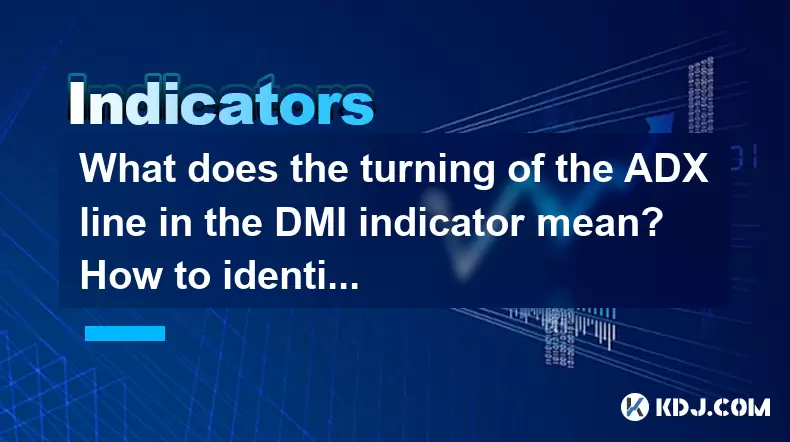
Understanding the DMI Indicator and Its Components
The Directional Movement Index (DMI) is a technical analysis tool used by traders to assess the strength of a trend, whether it's bullish or bearish. The indicator consists of three main components: the +DI (Positive Directional Indicator), -DI (Negative Directional Indicator), and the ADX (Average Directional Index) line.
Each of these lines plays a specific role in interpreting market dynamics. While +DI and -DI are used to determine the direction of the trend, the ADX line focuses on the strength of the trend, not its direction. This distinction is crucial for traders who rely on momentum-based strategies.
The Role of the ADX Line in Assessing Trend Strength
The ADX line fluctuates between 0 and 100. A reading below 20 generally indicates a weak or non-trending market, while a value above 25 suggests that a strong trend may be developing. When the ADX line starts turning upwards, it signals an increase in trend strength. Conversely, when the ADX line turns downward, it implies that the current trend is losing momentum.
It’s important to note that the ADX line does not indicate whether the trend is bullish or bearish. That determination must be made using the relationship between the +DI and -DI lines. For example, if +DI crosses above -DI, it suggests a potential uptrend, especially when accompanied by a rising ADX.
Interpreting the Turning Point of the ADX Line
A turning point in the ADX line occurs when the line changes direction after a sustained movement either up or down. This shift can provide valuable insight into the evolving nature of the trend.
If the ADX line was rising and then begins to fall, it means that although there may still be a directional bias (as determined by +DI and -DI), the strength behind the trend is waning. This could signal an impending consolidation phase or a reversal.
On the other hand, if the ADX line was declining and starts to rise, this suggests that the market is beginning to establish a new trend. Traders often look for confirmation from price action or other indicators before entering trades based on this signal.
How to Identify Changes in Trend Strength Using the DMI Indicator
Identifying changes in trend strength requires close monitoring of both the ADX line and the directional indicators (+DI and -DI). Here are some key observations and steps:
- Monitor the ADX line crossing above 25, which often confirms the emergence of a strong trend.
- Watch for divergences between the ADX line and price movement; for instance, if the price continues to make higher highs but the ADX fails to do so, it may suggest weakening momentum.
- Observe crossovers between +DI and -DI to identify the direction of the trend, particularly when combined with ADX readings above 25.
- Pay attention to how steeply the ADX line rises or falls—a sharp upward movement typically reflects strong momentum, while a rapid decline may signal abrupt loss of trend strength.
These steps allow traders to better understand whether the current trend has staying power or whether it's likely to reverse or stall.
Practical Application of the DMI Indicator in Cryptocurrency Trading
In cryptocurrency markets, where volatility is high and trends can develop quickly, the DMI indicator becomes even more useful. Here’s how you can apply it effectively:
- Apply the DMI indicator on your charting platform. Most platforms like TradingView, Binance, or MetaTrader offer this as a standard tool.
- Set the default period to 14, which is commonly accepted for DMI calculations unless you have a reason to adjust it.
- Overlay the ADX line along with +DI and -DI to visually track their interactions.
- Use the crossover of +DI and -DI in combination with ADX values above 25 to confirm trend direction and strength.
- Combine the DMI with other tools such as moving averages or RSI to filter out false signals and improve trade accuracy.
This approach helps traders avoid whipsaws and focus on meaningful trend movements in fast-moving crypto assets like Bitcoin, Ethereum, or altcoins.
Common Misinterpretations and Pitfalls
Despite its usefulness, the DMI indicator is often misinterpreted, especially by novice traders. One common mistake is treating the ADX line as a directional signal. Remember, ADX only tells you about the strength of the trend, not its direction.
Another frequent error is relying solely on ADX without considering the interplay between +DI and -DI. If the ADX is rising but +DI and -DI are very close, it might indicate a false start rather than a genuine trend.
Additionally, during sideways or ranging markets, the ADX line may remain low, misleading traders into expecting a breakout when none is forthcoming. Hence, always cross-check with other indicators and price patterns before making decisions.
Frequently Asked Questions (FAQ)
Q: Can the ADX line alone be used to make trading decisions?
No, the ADX line should not be used in isolation. It provides information on trend strength but not direction. It works best when combined with +DI/-DI crossovers and other technical tools like moving averages or volume indicators.
Q: What timeframes are most suitable for analyzing the DMI indicator?
While DMI can be applied across all timeframes, it tends to be more reliable on higher timeframes like 4-hour or daily charts, especially in volatile markets such as cryptocurrencies.
Q: Why does the ADX line sometimes move opposite to price action?
This can occur due to lagging characteristics of the indicator or because the underlying trend is losing momentum despite continued price movement. It may also reflect divergence, indicating a possible reversal.
Q: How often should I check the DMI indicator when actively trading?
For active traders, checking the DMI at least once per trading session is sufficient unless there's a significant shift in the ADX line or DI crossovers. Frequent checks may lead to overtrading.
Disclaimer:info@kdj.com
The information provided is not trading advice. kdj.com does not assume any responsibility for any investments made based on the information provided in this article. Cryptocurrencies are highly volatile and it is highly recommended that you invest with caution after thorough research!
If you believe that the content used on this website infringes your copyright, please contact us immediately (info@kdj.com) and we will delete it promptly.
- 2025-W Uncirculated American Gold Eagle and Dr. Vera Rubin Quarter Mark New Products
- 2025-06-13 06:25:13
- Ruvi AI (RVU) Leverages Blockchain and Artificial Intelligence to Disrupt Marketing, Entertainment, and Finance
- 2025-06-13 07:05:12
- H100 Group AB Raises 101 Million SEK (Approximately $10.6 Million) to Bolster Bitcoin Reserves
- 2025-06-13 06:25:13
- Galaxy Digital CEO Mike Novogratz Says Bitcoin Will Replace Gold and Go to $1,000,000
- 2025-06-13 06:45:13
- Trust Wallet Token (TWT) Price Drops 5.7% as RWA Integration Plans Ignite Excitement
- 2025-06-13 06:45:13
- Ethereum (ETH) Is in the Second Phase of a Three-Stage Market Cycle
- 2025-06-13 07:25:13
Related knowledge
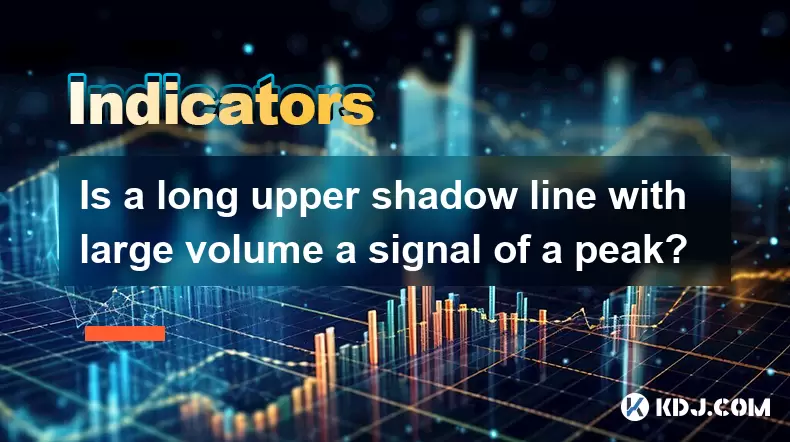
Is a long upper shadow line with large volume a signal of a peak?
Jun 17,2025 at 05:07am
Understanding the Long Upper Shadow LineA long upper shadow line, often referred to as a shooting star or inverted hammer depending on its location in a chart, is a candlestick pattern that indicates potential reversal from an uptrend. This pattern forms when prices rise significantly during the trading period but then fall back to close near the openin...

How to confirm the effectiveness of the average price line support in the time-sharing chart?
Jun 17,2025 at 12:56am
Understanding the Time-Sharing Chart and Its RelevanceIn cryptocurrency trading, time-sharing charts play a crucial role in analyzing short-term price movements. These charts typically display price fluctuations over a specific period, often ranging from minutes to hours. Traders rely on them to make quick decisions based on real-time data. The average ...

What does it mean when the momentum indicator breaks above the zero axis?
Jun 17,2025 at 12:43am
Understanding the Momentum IndicatorThe momentum indicator is a technical analysis tool used to measure the speed or velocity of price movements in cryptocurrency markets. It helps traders identify potential trend reversals, overbought or oversold conditions, and confirms existing trends. The indicator typically oscillates around a zero line, with value...
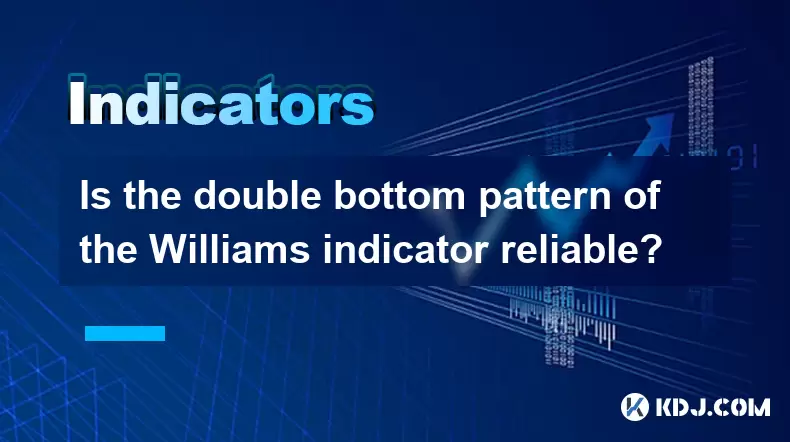
Is the double bottom pattern of the Williams indicator reliable?
Jun 17,2025 at 03:56am
Understanding the Williams Indicator and Its SignificanceThe Williams %R indicator, often referred to as Williams Percent Range, is a momentum oscillator used in technical analysis to identify overbought or oversold conditions in the market. Developed by Larry Williams, this indicator fluctuates between 0 and -100, with readings above -20 indicating ove...
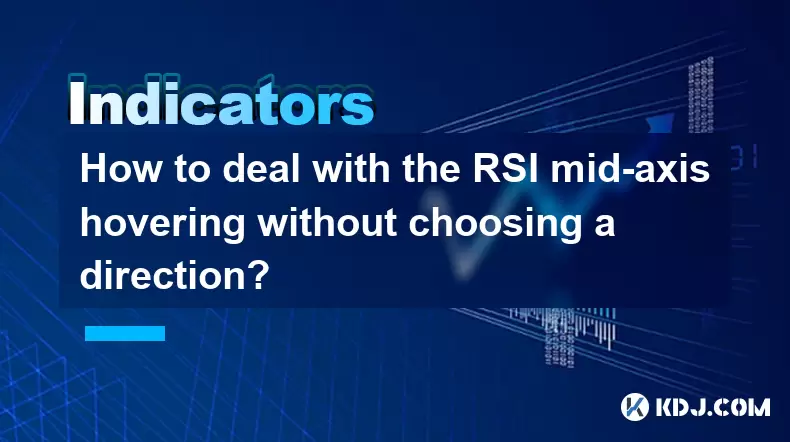
How to deal with the RSI mid-axis hovering without choosing a direction?
Jun 17,2025 at 02:02am
Understanding RSI Mid-Axis Hovering in Cryptocurrency TradingThe Relative Strength Index (RSI) is a popular momentum oscillator used by traders to assess whether an asset is overbought or oversold. In cryptocurrency markets, it's common for the RSI to hover around its mid-axis, typically at the 50 level, without showing a clear upward or downward trend....
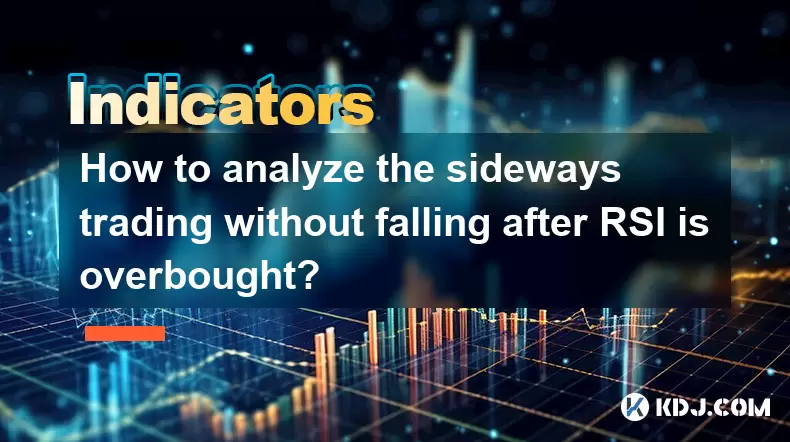
How to analyze the sideways trading without falling after RSI is overbought?
Jun 17,2025 at 04:14am
Understanding RSI and Its Role in Cryptocurrency TradingThe Relative Strength Index (RSI) is a momentum oscillator used to measure the speed and change of price movements. In the context of cryptocurrency trading, it helps traders identify potential overbought or oversold conditions. When the RSI exceeds 70, it typically signals that an asset may be ove...

Is a long upper shadow line with large volume a signal of a peak?
Jun 17,2025 at 05:07am
Understanding the Long Upper Shadow LineA long upper shadow line, often referred to as a shooting star or inverted hammer depending on its location in a chart, is a candlestick pattern that indicates potential reversal from an uptrend. This pattern forms when prices rise significantly during the trading period but then fall back to close near the openin...

How to confirm the effectiveness of the average price line support in the time-sharing chart?
Jun 17,2025 at 12:56am
Understanding the Time-Sharing Chart and Its RelevanceIn cryptocurrency trading, time-sharing charts play a crucial role in analyzing short-term price movements. These charts typically display price fluctuations over a specific period, often ranging from minutes to hours. Traders rely on them to make quick decisions based on real-time data. The average ...

What does it mean when the momentum indicator breaks above the zero axis?
Jun 17,2025 at 12:43am
Understanding the Momentum IndicatorThe momentum indicator is a technical analysis tool used to measure the speed or velocity of price movements in cryptocurrency markets. It helps traders identify potential trend reversals, overbought or oversold conditions, and confirms existing trends. The indicator typically oscillates around a zero line, with value...

Is the double bottom pattern of the Williams indicator reliable?
Jun 17,2025 at 03:56am
Understanding the Williams Indicator and Its SignificanceThe Williams %R indicator, often referred to as Williams Percent Range, is a momentum oscillator used in technical analysis to identify overbought or oversold conditions in the market. Developed by Larry Williams, this indicator fluctuates between 0 and -100, with readings above -20 indicating ove...

How to deal with the RSI mid-axis hovering without choosing a direction?
Jun 17,2025 at 02:02am
Understanding RSI Mid-Axis Hovering in Cryptocurrency TradingThe Relative Strength Index (RSI) is a popular momentum oscillator used by traders to assess whether an asset is overbought or oversold. In cryptocurrency markets, it's common for the RSI to hover around its mid-axis, typically at the 50 level, without showing a clear upward or downward trend....

How to analyze the sideways trading without falling after RSI is overbought?
Jun 17,2025 at 04:14am
Understanding RSI and Its Role in Cryptocurrency TradingThe Relative Strength Index (RSI) is a momentum oscillator used to measure the speed and change of price movements. In the context of cryptocurrency trading, it helps traders identify potential overbought or oversold conditions. When the RSI exceeds 70, it typically signals that an asset may be ove...
See all articles

























































































